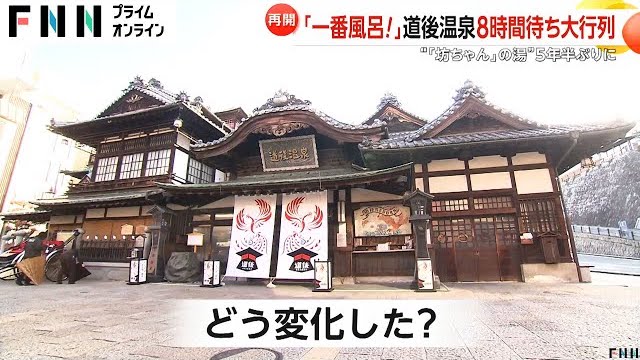Ehime, Jul 12 (News On Japan) - Dogo Onsen in Ehime has reopened after five and a half years of renovations. Some people waited as long as eight hours to be the first to take a bath.

The main building of Dogo Onsen, Japan's oldest hot spring, presented an unexpected sight on the morning of the 11th, the day of its reopening.
At 5:40 a.m. on July 11th, despite it being just after dawn, a line of Dogo Onsen enthusiasts had already formed. Even in the rain, over 20 people eagerly awaited the opening.
A university student at the front of the line said, 'I've been here since 10 p.m. last night. Eight hours. I wanted to be the first to take a bath.'
The building opened at 6 a.m.
Dogo Onsen Main Building, boasting a 3,000-year history and featured in Natsume Soseki's novel "Botchan," underwent extensive renovations while partially remaining open. How has it changed?
The newly opened "Shirasagi Room" is spacious and open, offering a view of the iconic 'Shirasagi' (white heron) symbol of the main building.
In this lounge, visitors can enjoy a new dessert, 'Dogo Yukari no Shirasagi.' The soft cookie dough's sweetness pairs well with the mild acidity of the inside.
Meanwhile, the bath fee has increased from 460 yen to 700 yen. In return, shampoo, body soap, lockers, and washbasins have been updated.
Additionally, air conditioning has been installed in the lounge and changing rooms, making the environment more comfortable.
The university student who waited eight hours was delighted, saying, 'I'm very satisfied. It was truly worth the wait.'
Source: FNN














